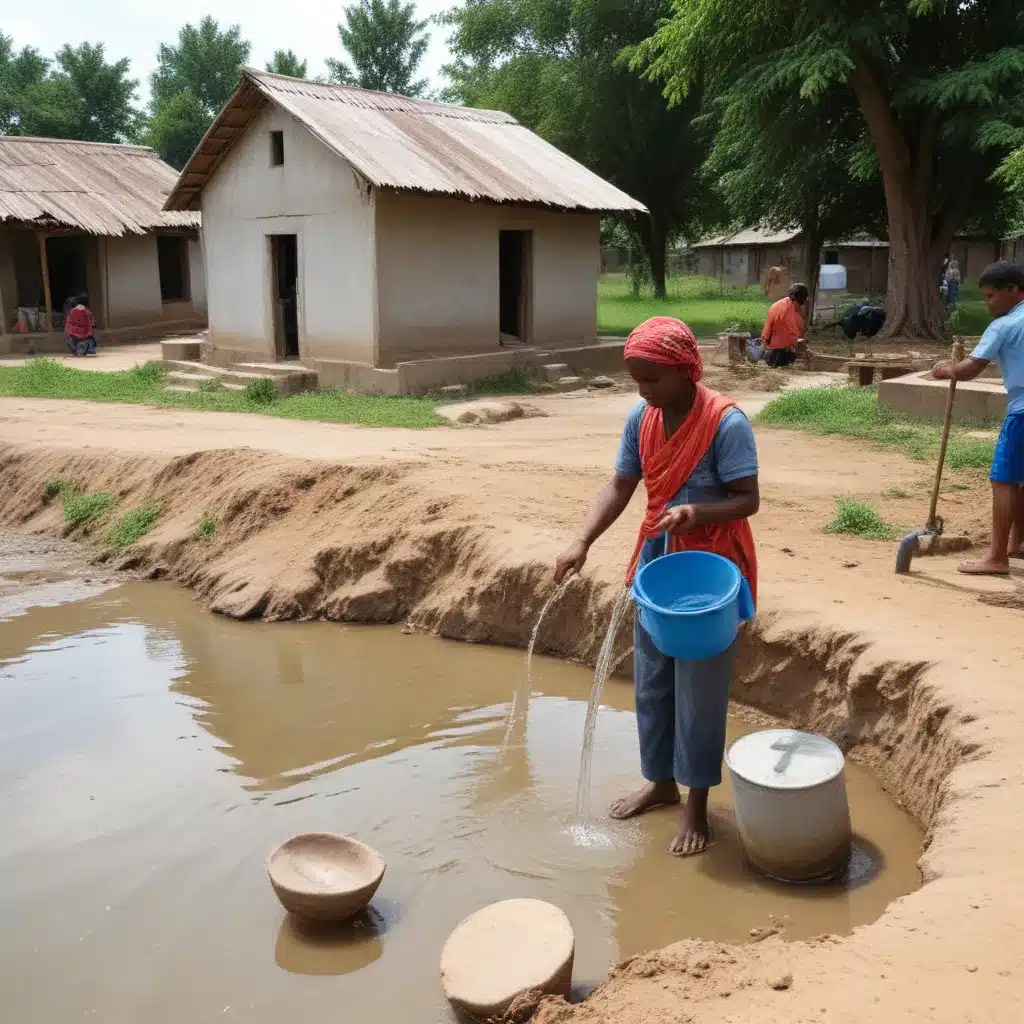
Understanding the Risks
Water and sanitation services are critical for community resilience, yet they are often the first to be disrupted by natural disasters. As the impacts of climate change intensify, communities around the world face growing threats from floods, droughts, and other extreme weather events that can devastate local water infrastructure and access to clean water.
Mainstreaming disaster risk reduction (DRR) into community water projects is essential for building long-term resilience. By proactively identifying and mitigating potential risks, communities can safeguard their most valuable water resources and ensure continuity of service, even in the face of crisis.
“Disaster risk reduction is the concept and practice of reducing disaster risks through systematic efforts to analyze and manage the causal factors of disasters, including through reduced exposure to hazards, lessened vulnerability of people and property, wise management of land and the environment, and improved preparedness for adverse events.” – United Nations Office for Disaster Risk Reduction
Integrating DRR into Water and Sanitation Initiatives
The Global Facility for Disaster Reduction and Recovery (GFDRR), a global partnership managed by the World Bank, has been at the forefront of supporting countries in mainstreaming DRR across development sectors, including water and sanitation. Through the Japan-World Bank Program for Mainstreaming Disaster Risk Management in Developing Countries, GFDRR has worked to connect Japanese disaster risk management (DRM) expertise with World Bank operational teams and national partners to build resilience.
“The Japan-World Bank Program has contributed to close to 80% of the low- and middle-income countries supported by the World Bank in institutionalizing disaster risk reduction as a national priority.”
This partnership has enabled the World Bank’s Tokyo DRM Hub to deliver demand-driven knowledge products and technical assistance to help countries plan, prepare, and implement water and sanitation projects that are resilient to natural hazards and climate change impacts.
Assessing Disaster Risks
A critical first step in mainstreaming DRR is to conduct a comprehensive risk assessment for the targeted water and sanitation systems. This involves:
- Hazard Identification: Determine the types of natural hazards (e.g., floods, droughts, earthquakes) that pose the greatest threats to the community’s water sources, infrastructure, and service delivery.
- Vulnerability Analysis: Assess the susceptibility of water and sanitation assets, as well as the community’s capacity to prepare for, respond to, and recover from disaster impacts.
- Capacity Evaluation: Identify the existing resources, skills, and systems in place to manage disaster risks, and pinpoint any gaps that need to be addressed.
By thoroughly understanding the risks, communities can develop tailored DRR strategies and prioritize investments to strengthen the resilience of their water and sanitation services.
Strengthening Community Resilience
Integrating DRR into water and sanitation projects can take many forms, but often includes:
- Infrastructure Hardening: Designing or retrofitting water supply and distribution systems, wastewater treatment facilities, and sanitation infrastructure to withstand the impacts of natural hazards.
- Emergency Preparedness: Developing contingency plans, early warning systems, and disaster response protocols to ensure continuity of water and sanitation services during and after a crisis.
- Capacity Building: Providing training and resources to community members, local authorities, and service providers to enhance their ability to manage disaster risks and lead recovery efforts.
- Ecosystem-based Approaches: Incorporating nature-based solutions, such as wetland restoration or watershed management, to enhance the natural resilience of water resources.
- Policy and Governance: Advocating for the integration of DRR into national and local water and sanitation policies, plans, and regulations to institutionalize resilience-building measures.
Empowering Communities through Participation
Successful mainstreaming of DRR in water and sanitation projects requires active community engagement and ownership. By involving local stakeholders throughout the process, from risk assessment to implementation, communities can:
- Leverage Local Knowledge: Tap into the community’s understanding of historical hazards, existing coping mechanisms, and priority needs to inform resilience-building strategies.
- Build Trust and Ownership: Ensure that DRR measures align with the community’s values, priorities, and cultural practices, fostering a sense of shared responsibility for the project’s long-term sustainability.
- Strengthen Collaborative Capacity: Facilitate multi-stakeholder coordination and decision-making, empowering communities to work alongside local authorities, service providers, and civil society organizations to manage disaster risks.
Scaling up DRR in the Water Sector
To truly mainstream DRR in community water projects, it is crucial to capture and share the lessons learned, best practices, and innovative approaches that have proven successful. The World Bank’s Tokyo DRM Hub, through the Japan-World Bank Program, has been instrumental in this regard, generating a wealth of knowledge resources and supporting countries in adapting and replicating effective DRR strategies.
“Knowledge is central to the World Bank’s ability to influence the global development agenda. As part of the World Bank’s evolution, the Knowledge Compact reinforces our commitment to leveraging knowledge alongside financing to deliver impactful solutions.”
By disseminating this knowledge and facilitating peer-to-peer exchanges, the Tokyo DRM Hub helps to build the capacity of water and sanitation practitioners, policymakers, and community leaders to mainstream DRR in their own contexts. This, in turn, contributes to the achievement of the Sendai Framework for Disaster Risk Reduction 2015-2030 and the 2030 Agenda for Sustainable Development.
Conclusion
Mainstreaming disaster risk reduction in community water projects is a critical step towards building resilient and sustainable water and sanitation services. By proactively identifying and mitigating risks, communities can safeguard their most valuable water resources and ensure continuity of service, even in the face of crisis.
The Japan-World Bank Program’s approach, centered on knowledge sharing and technical assistance, offers a powerful model for scaling up DRR integration across the water sector. By empowering communities to take the lead in managing disaster risks, we can create a more water-secure and resilient future for all.
To learn more about the Japan-World Bank Program and access a wealth of resources on mainstreaming DRR in the water sector, please visit the Joint Action for Water blog.

